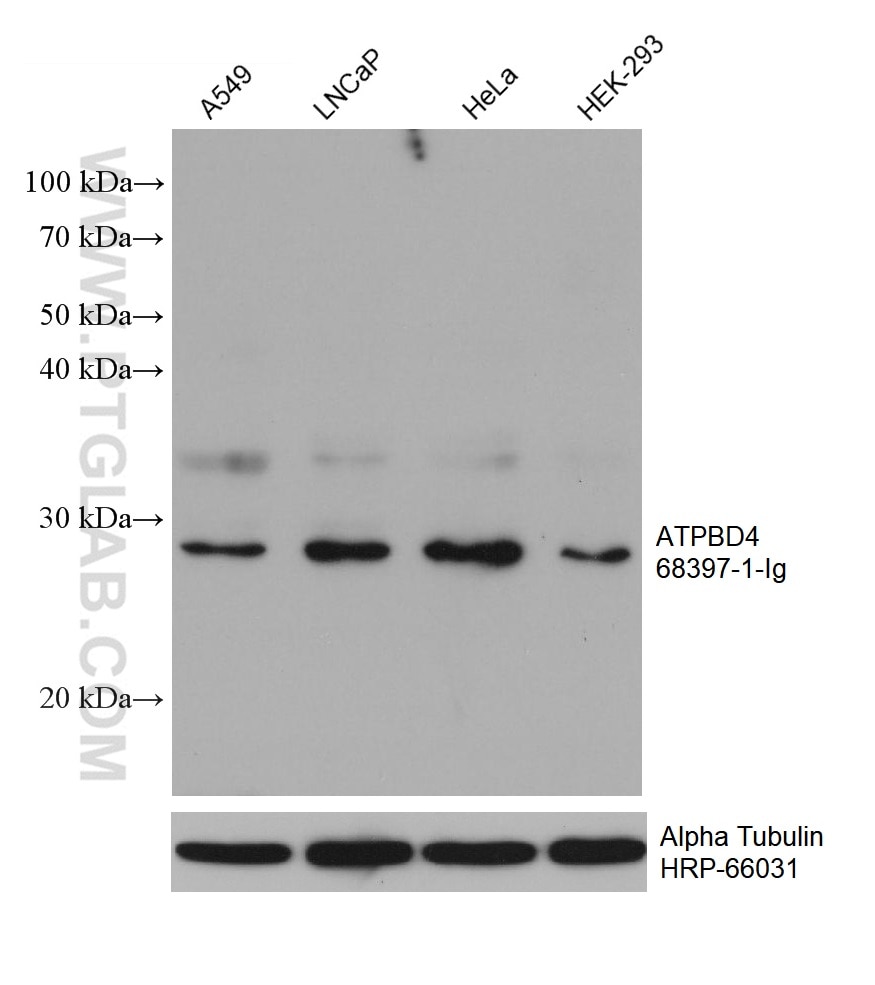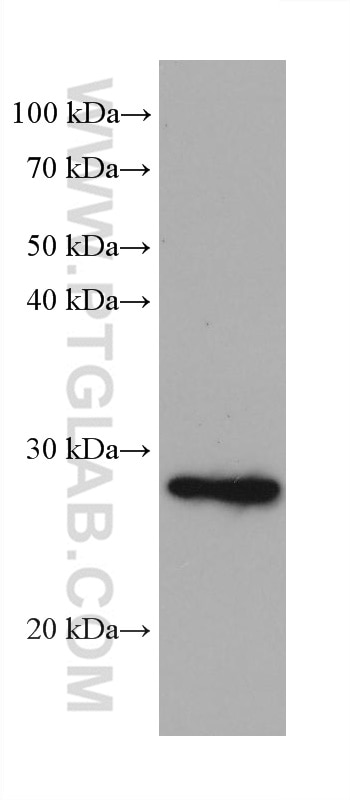Anticorps Monoclonal anti-ATPBD4
ATPBD4 Monoclonal Antibody for WB, ELISA
Hôte / Isotype
Mouse / IgG1
Réactivité testée
Humain
Applications
WB, ELISA
Conjugaison
Non conjugué
CloneNo.
2B12E1
N° de cat : 68397-1-Ig
Synonymes
Galerie de données de validation
Applications testées
| Résultats positifs en WB | cellules A549, cellules HEK-293, cellules HeLa, cellules K-562, cellules LNCaP |
Dilution recommandée
| Application | Dilution |
|---|---|
| Western Blot (WB) | WB : 1:5000-1:50000 |
| It is recommended that this reagent should be titrated in each testing system to obtain optimal results. | |
| Sample-dependent, check data in validation data gallery | |
Informations sur le produit
68397-1-Ig cible ATPBD4 dans les applications de WB, ELISA et montre une réactivité avec des échantillons Humain
| Réactivité | Humain |
| Hôte / Isotype | Mouse / IgG1 |
| Clonalité | Monoclonal |
| Type | Anticorps |
| Immunogène | ATPBD4 Protéine recombinante Ag33218 |
| Nom complet | ATP binding domain 4 |
| Masse moléculaire calculée | 267 aa, 30 kDa |
| Poids moléculaire observé | 28-30 kDa |
| Numéro d’acquisition GenBank | BC008485 |
| Symbole du gène | ATPBD4 |
| Identification du gène (NCBI) | 89978 |
| Conjugaison | Non conjugué |
| Forme | Liquide |
| Méthode de purification | Purification par protéine G |
| Tampon de stockage | PBS avec azoture de sodium à 0,02 % et glycérol à 50 % pH 7,3 |
| Conditions de stockage | Stocker à -20°C. Stable pendant un an après l'expédition. L'aliquotage n'est pas nécessaire pour le stockage à -20oC Les 20ul contiennent 0,1% de BSA. |
Informations générales
Diphthamide is a highly modified histidine in the transcription factor EEF2 that is conserved from yeast to human. ATPBD4, also known as DPH6, belongs to the Diphthine--ammonia ligase family. DPH6 amidase may catalyze the last step of diphthamide biosynthesis using ammonium and ATP to play a role in catalyzing the final step of diphthamide biosynthesis, amidation of diphthine to diphthamide (PubMed:23169644).
Protocole
| Product Specific Protocols | |
|---|---|
| WB protocol for ATPBD4 antibody 68397-1-Ig | Download protocol |
| Standard Protocols | |
|---|---|
| Click here to view our Standard Protocols |



